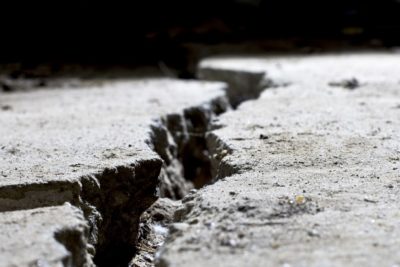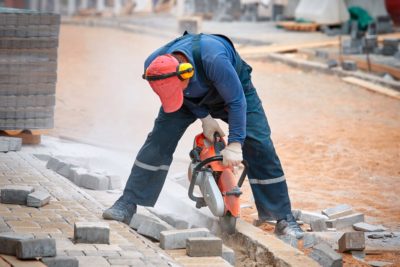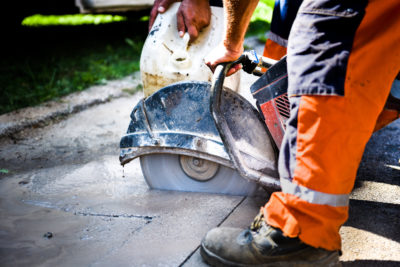Noise presents a serious problem on many construction sites. Construction sites are by their very nature noisy places, so a certain amount of noise is only to be expected. But noise can pose a serious risk to the health and safety of the workers as well as people living in the vicinity.
It’s therefore essential to make sure you are doing everything possible when it comes to making noise reductions to keep noise levels as low as possible. So how should you go about doing this? Here we look at the issue of noise, why it is problematic and hazardous noise control levels you can implement.
The Risks Posed by Noise
Due to the nature of construction work, there are many tasks that produce a lot of noise. Workers are exposed to noise from their own tasks as well as ambient noise from other tasks. The acceptable noise level that workers can be exposed to is 85 decibels (dB) over a period of eight hours. Any noise above this level is seen as hazardous.
Excess noise on construction sites poses a serious risk to workers. According to the SafeWork website, exposure to high noise levels is a big cause of hearing loss in various industry sectors in NSW.
Damage to the ears caused by noise does not have to be painful in order to be serious. In fact, hearing damage can occur over a long period of time. Exposure to loud noises, either at the same time or over a prolonged period of time, can cause damage to the hair cells in the ear. Once these cells have been destroyed, they do not grow back.
Instant hearing damage can be caused by sudden loud noises, which can occur on construction sites and be caused by equipment or explosives. When this occurs, it is called acoustic trauma. However, prolonged exposure to excessive noise levels can also increase the risk of hearing loss.
Loud noises can also cause conditions like NIHL and tinnitus, which is a ringing in the ears. Being exposed to too much noise can also affect sleep and concentration levels as well as causing physical problems.
However people are negatively affected by excessive noise levels, the potential problems can be serious enough that they may seek compensation against your company, which could lead to serious financial problems. As a result, it’s always important to reduce the amount of noise on your construction site as much as possible to ensure it is at a safe level.
Who Is At Risk?
Who exactly is at risk of excessive noise on construction sites? The people most at risk of suffering hearing problems from noise are the workers themselves. The people you employ to work the machinery are most likely to spend longer periods of time around loud noises, so they are most at risk.
This is especially the case for those workers that are using impact equipment like concrete breakers and pneumatically powered equipment, or those who are working with explosives.
But it’s not just the workers on the construction site who are at risk of hearing problems as a result of loud noises. Other people are at risk too. This includes people who are working around the noisy machinery even if they are not directly using the tools, or people who are visiting the site.
You also need to consider those people who are living or working near to the construction site. This is usually more of a problem where work is being carried out in towns and cities. People could find that their sleep is affected by the noise, and it may affect their quality of life.
Noise Regulations
Due to the potential harm caused by excessive noise levels on construction sites, there are regulations in place to help ensure that noise is kept to a minimum. The Environmental Protection (Noise) Regulations 1997 (Noise Regulations) is responsible for governing noise levels in Western Australia, and its aim is to protect people from suffering disturbances caused by noise.
Environmental health officers are tasked with managing noise levels and investigating complaints. They may measure noise levels if they receive a complaint and determine whether it is too high.
There may be rules in place surrounding when work can be carried out on construction sites. In Perth, for example, noise made from construction sites is exempt from the Noise Regulations Act at certain times: from Monday to Saturday from 7 am to 7 pm. Construction work can be carried out at other times but only under very strict conditions.
Who Is Responsible for Noise Levels?
Where construction sites are concerned, the owner is usually responsible for ensuring sufficient noise reductions so that the noise levels are acceptable.
However, it’s also important to mention that everyone has some responsibility. Workers may not be directly responsible, but they do have a responsibility for themselves and other workers, which involves taking reasonable care to ensure a safe workplace.
Monitoring Noise Levels
It’s important to monitor the noise levels on construction sites to identify noises that are hazardous. You should do this by working together with the workers as well as health and safety representatives.
Sometimes the fact that noise levels are too high is not obvious. But the simplest way to tell whether noise levels are too high is to talk to people in the area. If you have to raise your voice when talking to someone a metre away, the noise is likely to be above 85 dB – and therefore potentially hazardous – meaning noise reductions should be implemented.
Carry out regular inspections by walking around the work area and talking to workers. See how they are working and ask them whether noise levels are too high. Work out where the loud noises are coming from and which tasks produce the most noise.
You should also review information from manufacturers. Guidelines should be provided about the noise levels of specific pieces of equipment that are being used to give you a clear idea of whether equipment is being used safely.
How to Manage Noise on Construction Sites
It’s easy for noise levels to become too high on construction sites for a variety of reasons. It’s therefore important to manage noise levels and control them properly for the safety of workers and people in the vicinity of the construction site.
Here are some of the most effective ways to control and limit noise levels on construction sites.
Plan Properly
It’s important to plan properly if you want to avoid exposing workers to high noise levels. There are lots of steps that you can take during the planning stage, such as scheduling noisier activities for when there are fewer workers in the area, preparing guidance for workers, preparing estimates for the amount of noise exposure workers will be exposed to, and even designating a noise coordinator.
It can help at this stage to talk to the workers and find out from them which tasks they find the noisiest so you can start taking steps to make their working environment more comfortable.
Choose Quieter Machinery
A simple step to take at the planning stage is to choose your machinery with care. Manufacturers should be able to provide information on the noise levels of their machinery, and you can use this information to help reduce noise on the construction site from the start.
By investing in quieter machinery and making smarter decisions at this stage, you could save yourself a lot of work later on in terms of reducing the noise levels on the site.
Ensure Correct Maintenance
Whatever equipment, tools and machinery you use on the worksite, correct maintenance is important to keep noise levels down. Over time, parts can get worn down, leading to excessive noise levels like vibrations and rattling. Equipment that is well-maintained will often make less noise.
Eliminate the Noise Source
The first thing to try and do when it comes to hazardous noise control is to eliminate the noise source completely, which will have the biggest impact on the overall noise levels.
For example, if you are using a generator, you may find that this creates a lot of unnecessary noise. Do you have the option of switching it to a mains supply instead? If so, you can eliminate this noise source completely.
If a noise source cannot be eliminated, you need to work out how to reduce the noise. This could involve simple steps like replacing noisy equipment with less noisy equipment, or moving it away to another area by using extension cords to lower the amount of noise the workers are exposed to.
Modify Equipment
Where possible, modify equipment in order to reduce the amount of noise created. You could do this by using silencers and baffles on machinery as a simple way to reduce loud noises.
Make Use of Barriers
Consider using barriers around the noise source to keep the noise under control. By erecting plywood barriers around the noise source, you can limit the amount of noise reaching the workers.
Change How You Work
There are many ways you could change how a job is carried out in order to reduce the noise created by the task. For example, where items are being dropped and making a loud noise on impact, consider lowering them to the ground instead. Or you could use gas cutters when cutting metal instead of grinding methods or opt for a wet concrete cutting method to reduce friction, dust, and noise emissions along with it.
Look for ways to reduce the noise in everything you do. Is there a loud fan on-site? Turn down the speed. If there are particularly loud machines, operate them at different times of the day when there are fewer workers.
Limit how long one person spends near to noisy equipment and move workers away from a noise source. You could even create a designated quiet area where workers can get away from the noise sources.
Simple steps like securing bolts and fasteners to avoid rattling, creating procedures like turning off engines when not in use and ensuring the horn on vehicles is only used if absolutely necessary, can help to reduce the overall noise level.
Provide Workers with Hearing PPE
It’s always important to take steps to reduce the amount of noise on the worksite. But it’s also crucial to provide workers with personal protective equipment (PPE) like earplugs and earmuffs.
Don’t simply provide hearing PPE in order to avoid taking other steps. It’s not an alternative to hazardous noise control but an additional measure. PPE can fail or it might not be efficient enough. People may also use it incorrectly, making it ineffective. This can be a solution where noise exposure cannot be eliminated completely, and it could also be used as a temporary measure until the noise can be reduced further.
Make sure that the PPE you provide is highly effective and suitable for the work being carried out. It should be comfortable and compatible with other equipment. You should also provide a variety of hearing PPE and ensure it meets the relevant standards.
Ensure correct supervision, training and instruction so that the PPE is used properly. Also ensure correct maintenance and storage, and replace any damaged PPE.
Use Noise Control Techniques on Construction Sites
Noise exposure can have serious consequences on a construction site. Fortunately, there are lots of hazardous noise control measures you can take to make noise reductions or eliminate noise on sites and to protect people on and nearby the site. Make sure you take the appropriate steps to reduce noise, and ensure a safer working environment for everyone.



